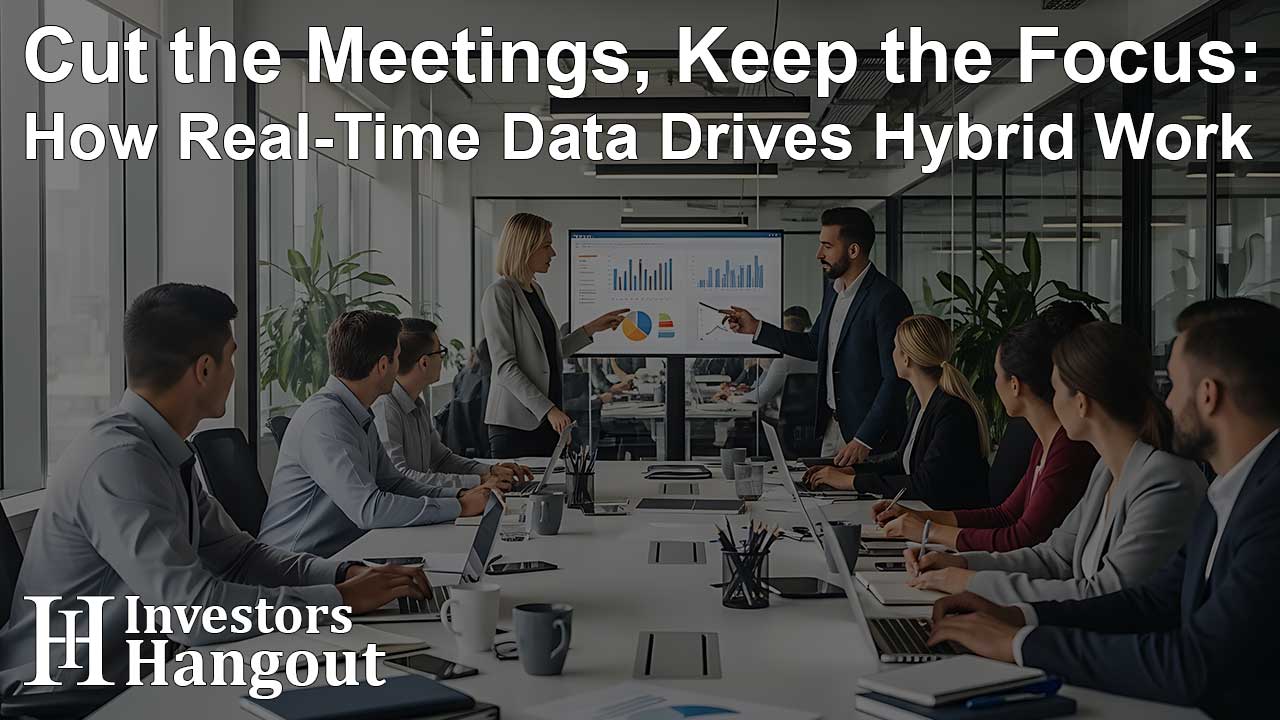Cut the Meetings, Keep the Focus: How Real-Time Data Drives Hybrid Work

It doesn’t take much for the calendar to fill with back-to-back calls. Between syncs, check-ins, and updates, the actual workday gets squeezed into slivers of time. By the end, focus is scattered, and progress feels thinner than it should. The problem isn’t that hybrid teams need more communication. It’s that too much of it is trapped in meetings.
This article explores how to reclaim focus by replacing low-value meetings with clarity from real-time data. Employee tracking software helps you see what’s happening across your team so you can make the right call at the right time.
The Cost of Meeting Overload in Hybrid Teams
Back-to-back calls look like alignment, but they drain the hours meant for real work. In hybrid and remote setups, meetings often become the default way to stay connected, and that default comes at the cost of focus.
This is how too many meetings drain hybrid work:
-
Fragmented Focus: Frequent calls break up the day into chunks too small for meaningful work.
-
Meeting Time Crowds Out Output: Too many calls eat into deep work time and slow progress on real deliverables.
-
Uneven Workloads Stay Hidden: With hours lost in meetings, it’s harder to spot who’s overloaded and who’s waiting on tasks.
-
Disengagement Stays Hidden: A teammate starts drifting, but you only notice once deadlines are already at risk.
With the right signals in place, you can reduce call time and still keep a clear view of progress.
Here is how to use real-time data to replace unnecessary meetings:
1. Use Live Dashboards Instead of Status Calls
A live dashboard pulls daily activity into one place so you don’t need endless updates. It shows which projects are moving, who’s active, and where progress is slowing. That visibility makes check-ins shorter and more targeted.
Status calls are meant to keep work visible, but they often eat up hours without surfacing anything new. Without a clearer view, you risk losing hours that could have gone into focused work.
Replacing recurring status meetings with a quick dashboard review keeps progress transparent. The update happens instantly, and meeting time is freed for coaching or problem-solving.
How can a hybrid workforce monitoring service cut back status calls?
A hybrid workforce monitoring service collects activity in real time, showing where work is moving and where it’s stalling. For example, a teammate might fall behind on a shared task, prompting you to step in directly instead of scheduling another update call.
2. Track Meeting-to-Work Ratios
Counting meetings is easy, but the real signal is how much time they steal from focused work. Tracking the ratio between time in calls and time spent producing shows when the balance tips too far.
Without that view, it’s easy to believe meetings are productive simply because they happen. The risk is that you only realize focus is gone once deadlines start to slip.
A simple ratio makes the pattern visible. It highlights when calls crowd out real output, giving you the chance to cut back before focus is lost for the week.
How can a hybrid workforce tracking solution reveal when meetings outweigh real work?
A hybrid workforce tracking solution logs how much time is spent in video calls compared to project tools or focused work apps. Your team might spend nearly half their day in meetings, which could lead you to cut recurring syncs and protect more time for focused work.
3. Surface Workload Imbalances Early
Uneven workloads often drive more meetings because teammates need to coordinate when progress stalls. Spotting who is overloaded and who has spare capacity lets you redistribute work before it creates another round of calls.
If this imbalance goes unnoticed, the risks compound. Burnout builds for those carrying too much, while disengagement grows for those underused. Both lead to missed deadlines, and the reaction is usually even more meetings.
SHRM found that 51% of workers end their day feeling completely used up, 45% say they’re emotionally drained, and 44% admit they’re burned out.
Balancing capacity in advance keeps work flowing smoothly. It prevents the fire drills that pull everyone into extra calls and gives your remote and hybrid team more space for real progress.
How can a hybrid workplace engagement dashboard reveal workload imbalance?
A hybrid workplace engagement dashboard shows active time across teammates, making uneven workloads obvious. One teammate might log long evening sessions while another has idle gaps, and you could redistribute tasks before burnout or disengagement takes hold.
4. Catch Signs of Disengagement Without Another Check-In
The first reaction to slipping engagement is often another one-on-one, but the signals usually appear much earlier in daily patterns. Slower activity, shorter focus sessions, or constant context-switching can all point to trouble.
If you wait until problems surface in reviews or missed deadlines, it’s already too late. By then, the reaction usually means more meetings, which only add to the overload.
Reviewing activity trends regularly makes disengagement easier to spot. Detecting these signals early gives you the chance to step in with support before performance slides and without piling on extra check-ins.
How can a workforce intelligence platform flag disengagement risks?
Insightful.io workforce intelligence platform shows shifts in activity patterns, such as frequent context-switching or long idle gaps.
Activity across a teammate’s day might show constant switching between tools with little sustained progress, which could signal disengagement and lead you to step in before output slips.
5. Protect Focus & Reduce Meetings With Smart Tools
A monitoring tool replaces assumptions with live activity insight, reducing the need for status calls and giving you a clear view of progress without constant check-ins.
Here are four ways it helps you protect focus:
-
Real-Time Activity Views: Show progress instantly, so you don’t need recurring status calls.
-
Meeting vs. Work Reports: Track ratios to protect deep work time from being eroded.
-
Workload Heatmaps: Highlight uneven capacity so you can rebalance tasks quickly.
-
Engagement Signals: Spot early signs of drift and address them without piling on more calls.
Final Word
Cutting back low-value meetings gives your team more time and energy for focused work. A monitoring tool makes that shift stick by turning activity into clear signals instead of extra calls. With that clarity in place, hybrid and remote work moves forward with a stronger focus and smoother progress.
About The Author
Contact Hannah Lewis privately here. Or send an email with ATTN: Hannah Lewis as the subject to contact@investorshangout.com.
About Investors Hangout
Investors Hangout is a leading online stock forum for financial discussion and learning, offering a wide range of free tools and resources. It draws in traders of all levels, who exchange market knowledge, investigate trading tactics, and keep an eye on industry developments in real time. Featuring financial articles, stock message boards, quotes, charts, company profiles, and live news updates. Through cooperative learning and a wealth of informational resources, it helps users from novices creating their first portfolios to experts honing their techniques. Join Investors Hangout today: https://investorshangout.com/
